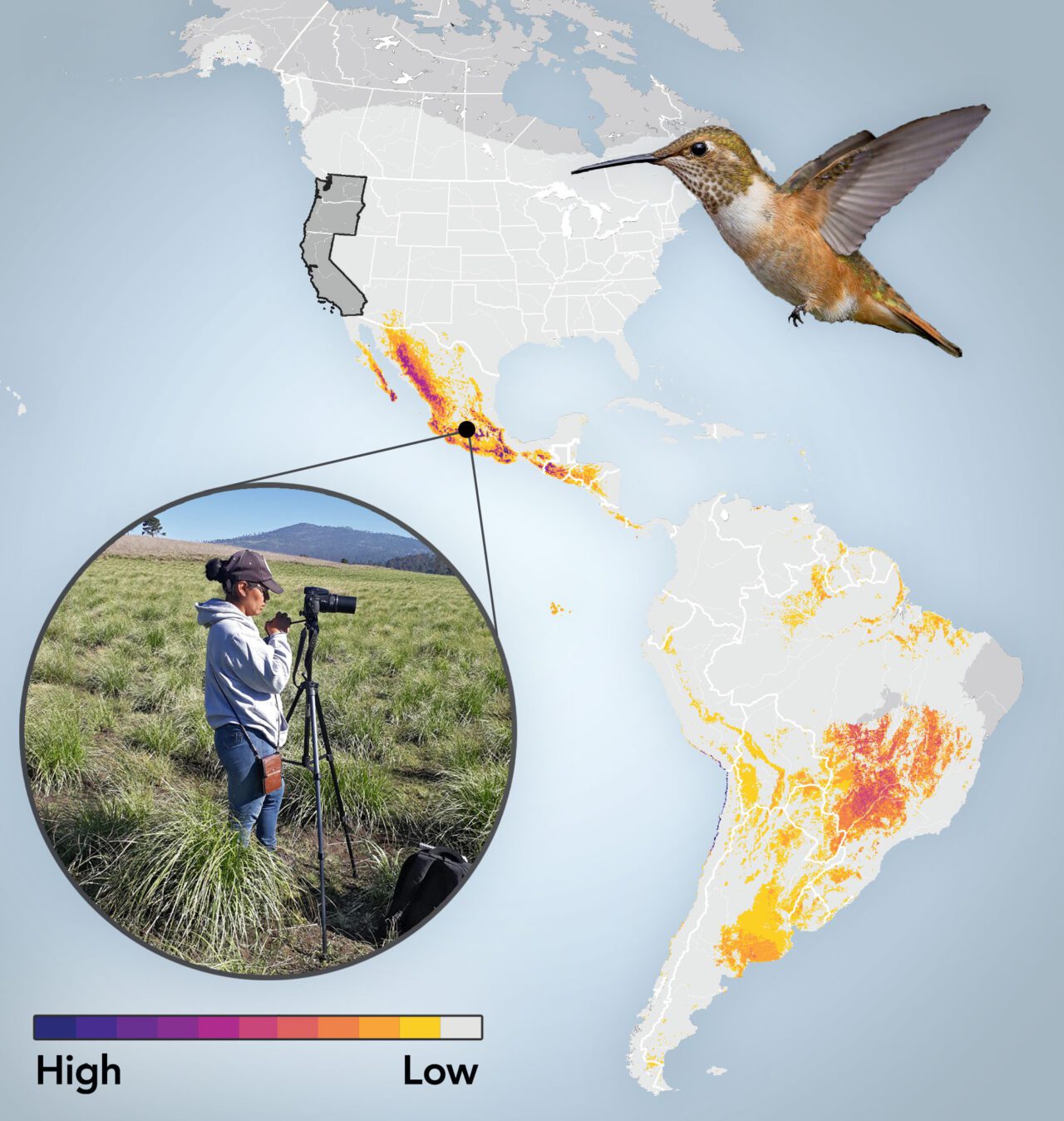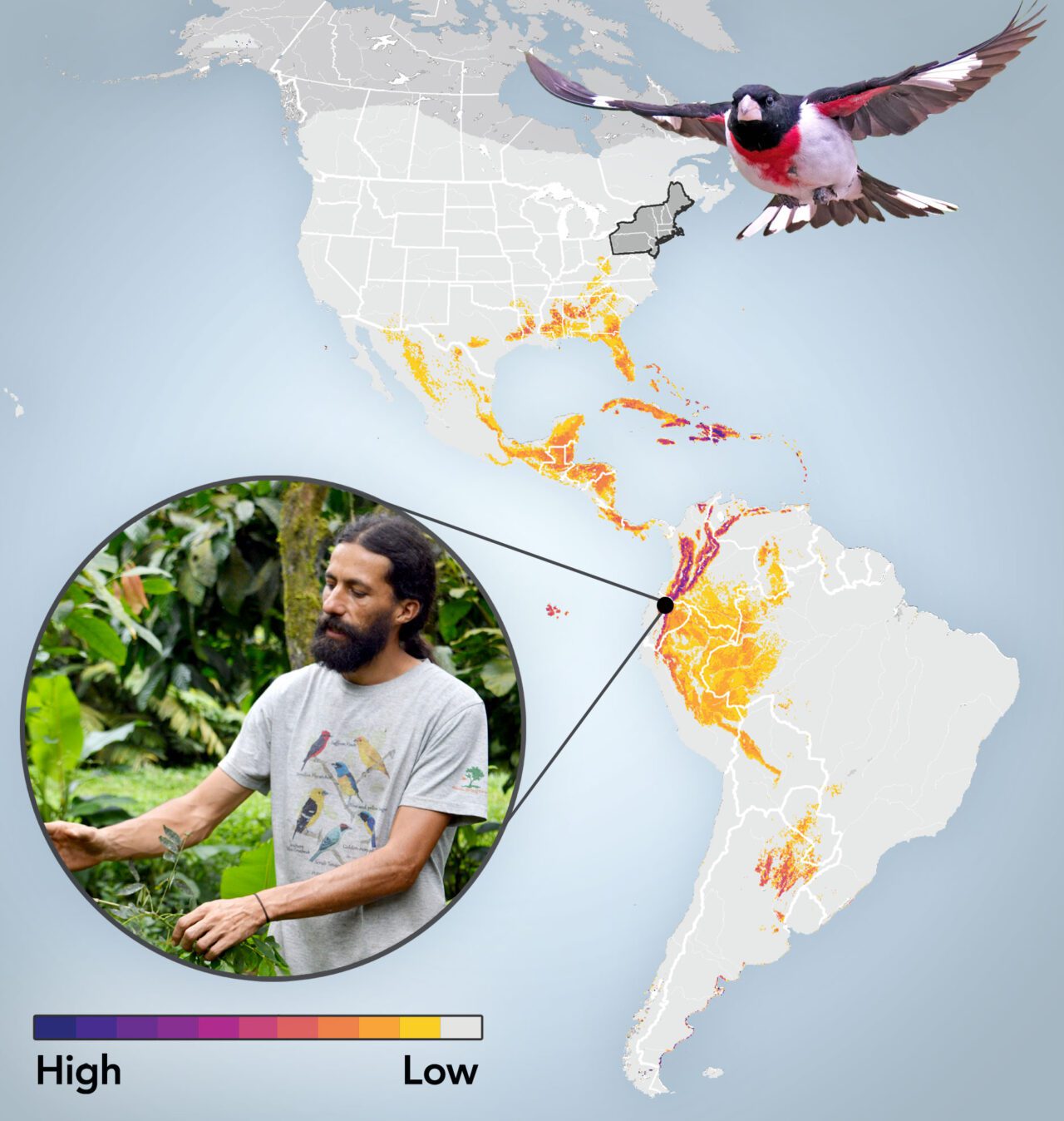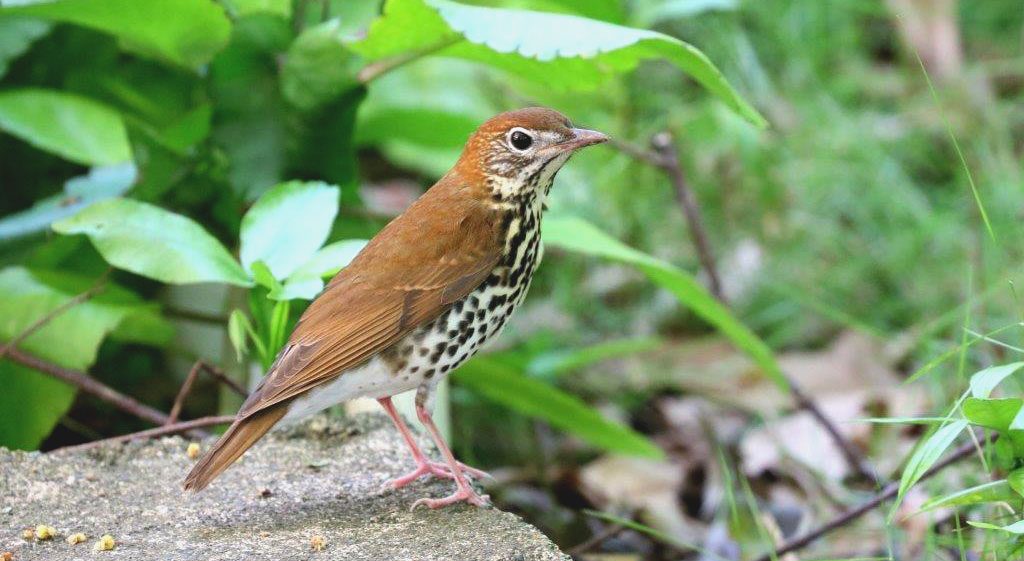From the Winter 2024 state of affairs of Dwelling Chook journal. Subscribe now.
Kristen Heath-Acre lives in Columbia, Missouri, which formally has a sister-city relationship with Hakusan Metropolis, Japan.
Nevertheless Heath-Acre, the state ornithologist for the Missouri Division of Conservation, says she feels additional of a sister-city connection to the town of Santa Marta and the mountain forests near the coast of northern Colombia. On account of by a model new set of maps produced using eBird data—known as eBird Shared Stewardship Maps—Heath-Acre can see that Missouri has a specific reference to the Sierra Nevada de Santa Marta, as a result of the winter dwelling of Cerulean Warblers and totally different migratory songbirds that breed throughout the Current-Me State.
In line with Heath-Acre, recognizing these explicit migratory-bird connections between places throughout the north and south is a key to environment friendly conservation for these species that fly up and down the hemisphere.
“Birds on all the are disappearing. Their populations are declining,” she says. “And so if we attempt to assist birds on all the proper right here throughout the U.S., we’ve now to take a look at their whole life cycle, what’s going down all 12 months lengthy.”
The Cornell Lab of Ornithology produced these data-driven maps in collaboration with Partners in Flight, a consortium of bird-conservation scientists throughout the Western Hemisphere. An increasing number of, scientists are emphasizing the importance of full life-cycle conservation—preserving and defending the habitat {{that a}} migratory hen desires for every its breeding and nonbreeding durations.
Visualizing The place “Our” Birds Go When They Go away
“We repeatedly think about birds as belonging to our states, or belonging to the place they’re as soon as they’re breeding,” says Sarah Kendrick, a migratory hen biologist with the U.S. Fish and Wildlife Service. “Nevertheless truly, we’re solely web internet hosting these birds for quite a lot of months of the yr. They’re nearly tropical birds.”
For example, eBird data current {{that a}} Cerulean Warbler in Missouri’s Ozarks has a breeding window of about 49 days sooner than preparing for migration. Nevertheless almost half of that hen’s yr—an estimated 149 days—is spent in Colombia all through the nonbreeding interval.
“We share these migratory hen populations with our conservation companions all through the hemisphere,” says Kendrick. “And everyone knows that they’re going via fundamental threats all via that full yr. These eBird stewardship maps help to paint that picture in a extraordinarily cool seen methodology, of the place our shared birds are touring previous our borders.”
The maps are powered by a dataset that consists of 44 million eBird checklists submitted by birders from 14 million locations all via the Western Hemisphere from 2007 to 2021.
“It’s a great deal of data, and principally we’re capable of see each species comment in each tips as a data stage,” says Archie Jiang, the Cornell Lab laptop computer programmer who generated the Shared Stewardship Maps. Jiang graduated from Cornell School in Would possibly 2023 as a laptop science fundamental, and he was an officer throughout the Cornell Birding Membership as an undergrad. “We’ve this home and time data of the place individuals are observing birds, and that’s the raw data that we’re working with.”
Jiang fed modeled eBird data into a sophisticated program (developed by Cornell Lab data scientist Matt Strimas- Mackey) that acknowledged places the place migratory birds are concentrated throughout the nonbreeding season. He then weighted these outcomes by the proportion of hen breeding populations that occur inside a centered state or space, primarily highlighting parts of the map the place these birds go on migration. For example, he found that Black-throated Blue Warblers that breed in New York State current a very strong migratory connection to overwintering grounds in Jamaica.
Shared Stewardship Maps
West coast: Linkages for 48 Breeding Species
Rufous Hummingbirds be a part of the West Coast with Mexico Metropolis. In an Indigenous neighborhood merely south of Mexico Metropolis, the Brigada de Monitoreo Biológico Milpa Alta of San Pablo Oztotepec is working to revive subalpine grasslands. This house acts as a year-round refuge for the endemic, endangered Sierra Madre Sparrow, along with an very important overwintering house for Rufous Hummingbirds for 100 days of their nonbreeding season. Metropolis sprawl threatens the world, nonetheless native Indigenous leaders are driving efforts to examine, protect, and preserve the biocultural heritage of their of us and their land.

Midwest: Linkages for 84 Breeding Species
Observed Sandpipers Be part of the Midwest with the Peruvian Coast. All alongside the Pacific Coast of South America, the nonprofit science group Center for Ornithology and Biodiversity (aka CORBIDI by its Spanish acronym) is working to observe and defend areas for shorebirds. CORBIDI scientists handle shorebird surveys alongside the Peruvian coast every 4 years and cargo their data into eBird. Their survey data was not too way back used to nominate and purchase authorities protections for an house of mangroves in northern Peru that had been acknowledged as an very important house for Observed Sandpipers and totally different shorebirds.
Northeast: Linkages for 74 Breeding Species
Rose-breasted Grosbeaks Be part of the Northeast With the Ecuadorean Andes. All through the Choco Andino Biosphere space, the Mashpi Chocolate farm is regenerating forest that provides meals and acts as nonbreeding-season habitat for migratory songbirds similar to Rose-breasted Grosbeaks. Larger than 80% of the farm’s 140 acres have been restored to forest, with higher than 200 hen species counted throughout the latest survey. The farm’s sustainable cacao manufacturing carries a Garantía Agroecológica certification—which means no chemical pesticides or fertilizers are utilized in producing Mashpi’s large artisanal chocolate and cocoa delicacies.

Methods Summary: eBird Shared Stewardship Maps with uniqueness nonbreeding connections are generated by calculating the sum of nonbreeding hen abundance in each 3×3 km grid cell for all migratory hen species that breed inside a focal space, then weighting by the p.c of each species’ breeding inhabitants throughout the focal space. The outcomes are then divided by the complete sum of stewardship connections for all areas throughout the U.S. to stress the individuality of shared stewardship connections for a selected focal space.
“Birds are one in all many points that will hyperlink us all through big spatial scales,” says Cornell Lab quantitative utilized ecologist Andrew Stillman. “These connections have existed for 1000’s and 1000’s of years, nonetheless they’re truly exhausting to know. They’re invisible.”
Stillman says that in present a very long time, the arrival of radio- and GPS-tag monitoring utilized sciences allowed scientists to get a glimpse of these migratory connections between places; put a tag on a hen, observe it as a result of it flies south, and see the place it spends the winter.
Nevertheless whereas monitoring tags are good for locating out explicit particular person birds, they’ll’t yield data that’s useful on the size of full populations.
“The right data [for conservation scientists] may very well be if we put a tag on every single, stinking hen within the full U.S., nonetheless we’re capable of’t do that,” Stillman says. “These eBird Shared Stewardship Maps current us with baseline data on the species stage.”
Deb Hahn, the worldwide relations director on the Affiliation of Fish and Wildlife Companies, is putting these eBird maps to good use. Hahn directs the Southern Wings initiative, a partnership of state companies that connects states with conservation groups in Latin America. Hahn says the eBird Shared Stewardship Maps are terribly priceless in her efforts to point the natural connection between areas throughout the U.S. and areas south of the border, as she facilitates full life-cycle conservation initiatives for migratory birds.
“The stewardship maps might also assist a state firm get a manner of … what areas may very well be a great place for them to place cash into to have additional impression on the most effective number of species,” Hahn says.
Through Southern Wings, 41 state companies have donated nearly $3.9 million to initiatives in 11 worldwide places in Mexico, Central and South America, and the Caribbean. Hahn thinks the eBird maps will stimulate additional such cross-border conservation.
“Having the maps helps us make a stronger case for the need to place conservation {{dollars}} specifically areas,” she says.
Importantly, say Cornell Lab scientists, these maps must set the stage for true collaboration between conservation biologists throughout the U.S. and Latin America.

Setting the Stage for Collaboration
“Ideally, we’re these maps collectively. That’s truly all the idea behind shared stewardship,” says Viviana Ruiz Gutierrez, an area of Costa Rica who’s the director of conservation science on the Cornell Lab. “It’s to not try and impose a viewpoint or priority, however it certainly’s additional to know the place to seek for companions and contribute to conservation efforts which will be already on the underside in Latin America.”
For example, when the Missouri Division of Conservation wanted to spice up the effectiveness of their conservation funding to indicate spherical declining populations of long-distance migratory birds similar to Picket Thrush (a state-designated Species of Largest Conservation Need), they regarded to Latin America—by the use of Southern Wings—to companion up with the Colombian conservation group SELVA.
“SELVA’s present evaluation on migratory birds has seen huge revenue from cross-border collaboration with U.S. and Canadian authorities companies,” says Camila Gómez, a director at SELVA. “These funds go a extraordinarily good way in Latin America. They’ve served to utilize and assemble functionality of native researchers, implement evaluation and conservation actions on the underside, and highlight the importance of broad worldwide collaborations to make sure migratory hen welfare all via their annual cycle.”
Heath-Acre says she’s proud that Missouri was a frontrunner throughout the paradigm shift in direction of full life-cycle conservation.
“These birds don’t perceive these borders exist,” she says. “I imagine Missouri has carried out a extraordinarily good job of following the birds the place they go, providing funding and assist for evaluation the place these birds are going.”
In line with Sarah Kendrick of the USFWS, the eBird Shared Stewardship Maps could very properly be a catalyst for ramping up full life-cycle conservation efforts. And that’s desperately wished, as U.S. federal and state companies work to indicate spherical a big 26% loss amongst all Neotropical migratory hen populations since 1970, in response to evaluation revealed in Science in 2019.
Says Kendrick, “If we’re not addressing the threats that these birds face as soon as they’re previous our borders, we’re not doing all we’re capable of.”
Thank you for being a valued member of the Nirantara family! We appreciate your continued support and trust in our apps.
-
Nirantara Social - Stay connected with friends and loved ones. Download now:
Nirantara Social

-
Nirantara News - Get the latest news and updates on the go. Install the Nirantara News app:
Nirantara News

-
Nirantara Fashion - Discover the latest fashion trends and styles. Get the Nirantara Fashion app:
Nirantara Fashion

-
Nirantara TechBuzz - Stay up-to-date with the latest technology trends and news. Install the Nirantara TechBuzz app:
Nirantara Fashion

-
InfiniteTravelDeals24 - Find incredible travel deals and discounts. Install the InfiniteTravelDeals24 app:
InfiniteTravelDeals24

If you haven't already, we encourage you to download and experience these fantastic apps. Stay connected, informed, stylish, and explore amazing travel offers with the Nirantara family!
Source link

